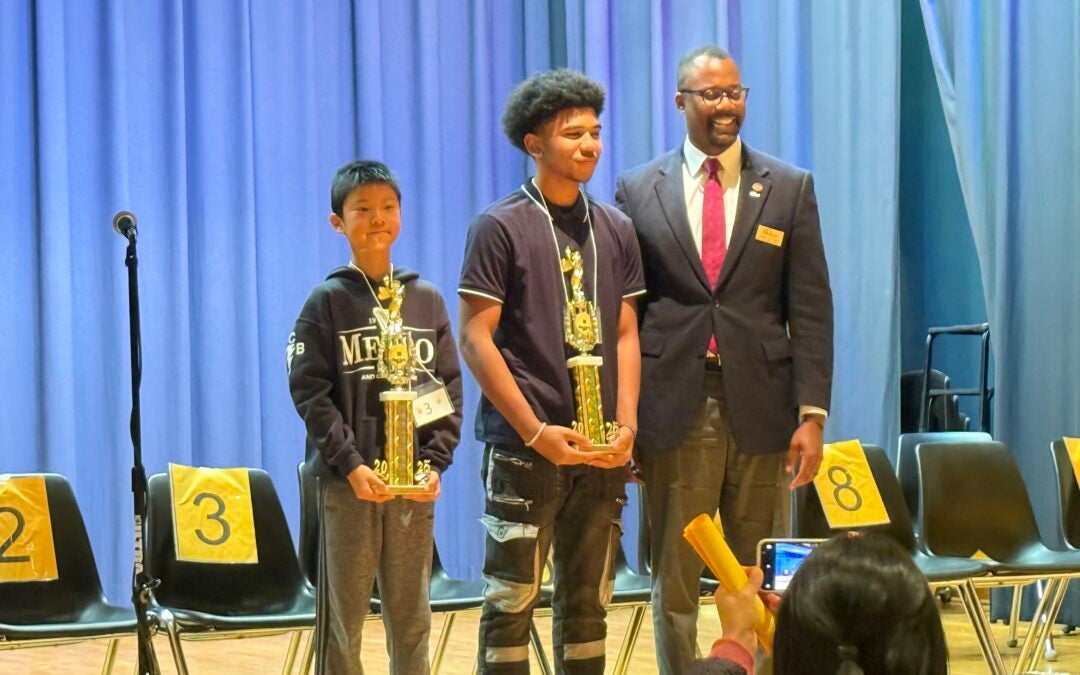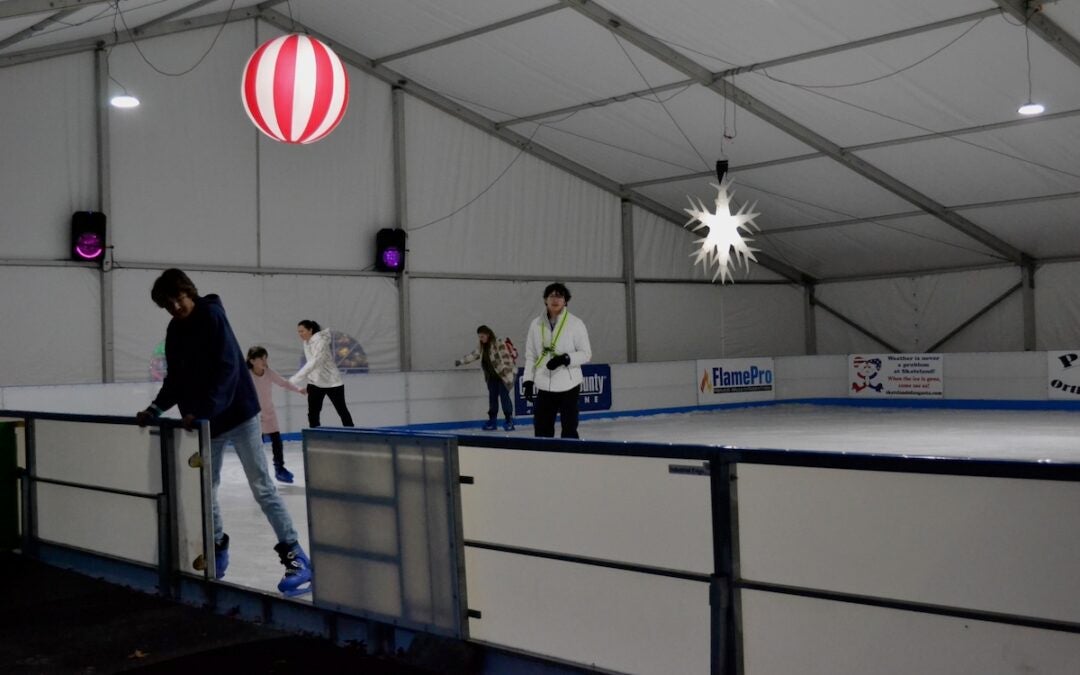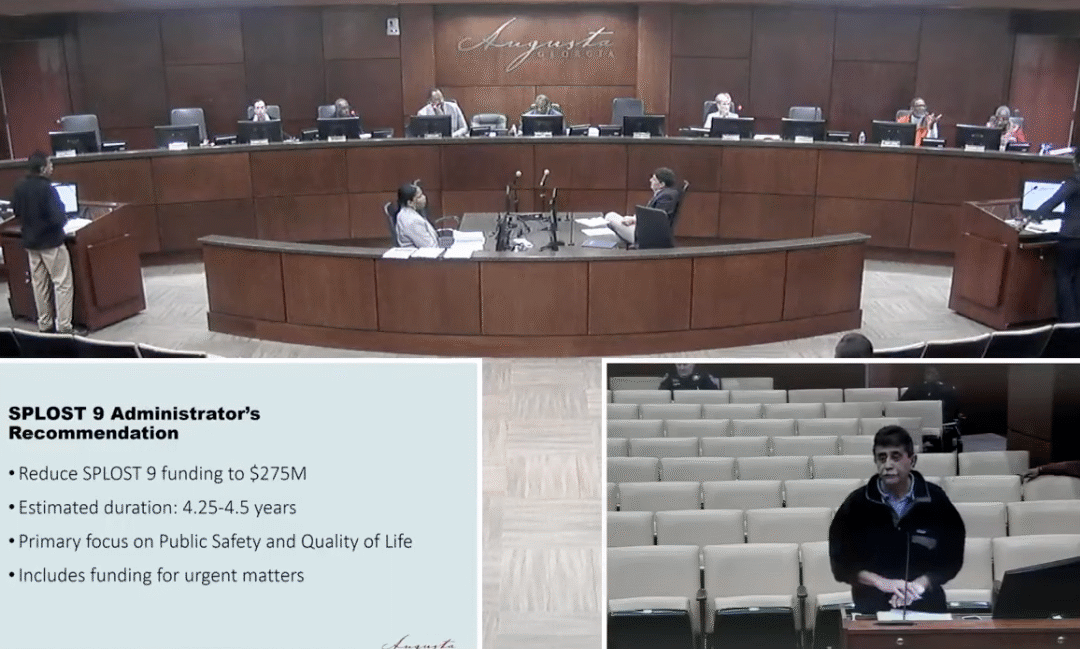When she was younger Amanda Behr never would have imagined she would make a living by working everyday to give patients’ parts of their faces back – or at least something very close to it.
After earning a degree in Liberal Arts and Sciences from Athens’ University of Georgia and a medical illustration degree from John Hopkins in 2004, Behr found an incredible amount of joy in helping patients across the state with her work, and was even awarded the Da Vinci Award for Exemplary Case Results in 2021 by the International Anaplastology Association.
“I actually originally wanted to pursue special effects makeup for movies when I was in high school, and then I started studying art at [the Savannah College of Art and Design], but I missed the sciences,” she said. “So anaplastology is actually a subset of medical illustration … it’s such a small specialty that no one really knows about, because patients of course aren’t going to be like, ‘look here’s my prosthetic ear.’ So nobody really knows about it.”
As the state’s only certified anaplastologist, Behr is currently working out of Augusta University’s Dental College, where she utilizes her art and technological skills to create non-weight-bearing body parts out of silicone, acrylic and plastic.
“I realized anaplastology would be really great to get into, because you can use your art for good,” said Behr. “It’s really rewarding … every day that I have a patient with happy tears is a good day for me.”
Creating eyeballs, noses, ears, breasts, lips and even fingers for patients who need prostheses due to birth differences, injuries or illness, Behr works day in and day out to improve the lives of those around her, and give others the confidence to socialize, work and visit loved ones without fear of ridicule or frightening others.
“These devices are custom made by hand; so it’s very much about the art of camouflage, where we’re making something to allow patients to go back into the public again,” said Behr. “It allows patients to not worry about what others are thinking, and the most common thing I hear from patients is that they don’t feel like they can go outside or see their grandkids; so it restores some sense of normalcy … it’s never going to replace what they lost, but it at least alleviates the fear of people asking them about [their injury].”
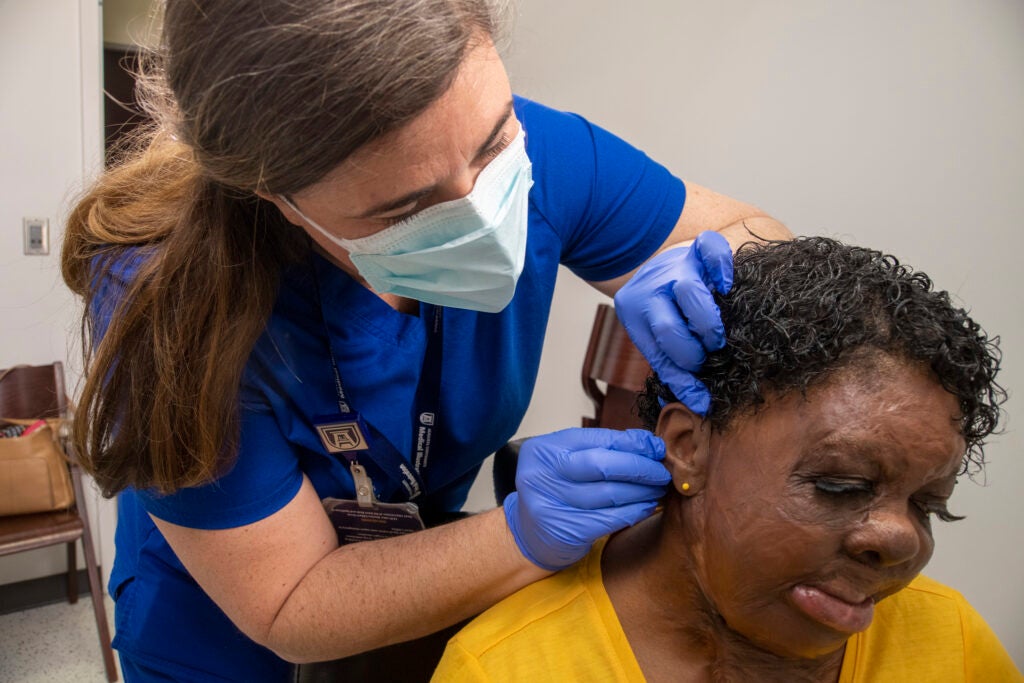
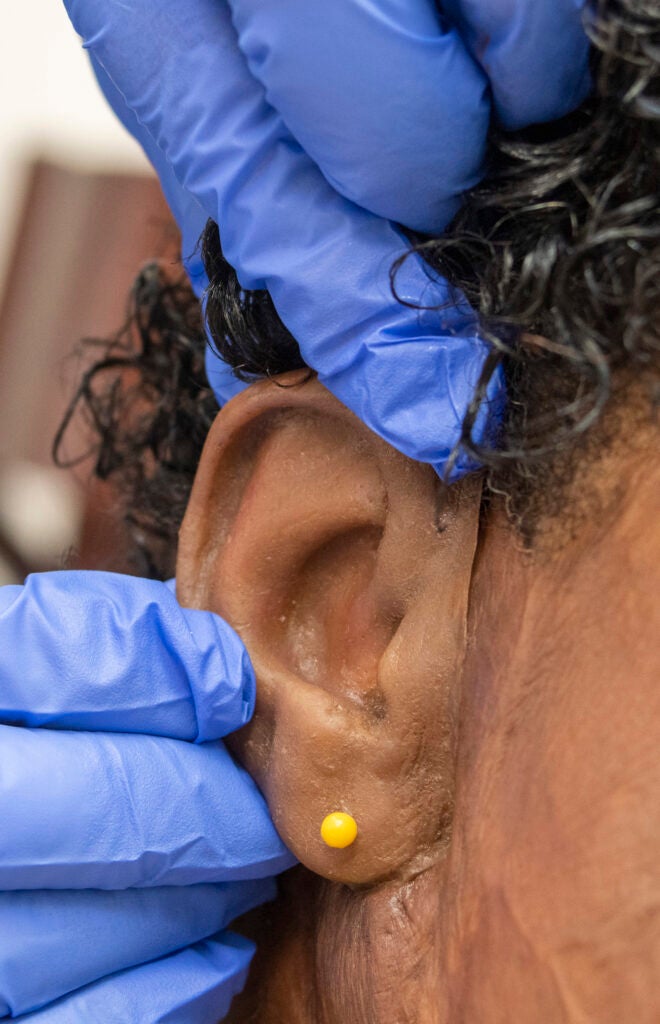
To seeing patients as young as infants who were born with birth abnormalities to older adults who have fought cancer, Behr has seen patients of all shapes, sizes and ages.
“Some patients will wear bandages on their face while they are getting treatments, and the immediate response from others is to ask what happened to them, and maybe someone just doesn’t want to talk about it,” she said. “It gives them something to help with that transition, because it is pretty traumatic to lose part of your face … it gives them hope within their recovery.”
Throughout the color matching, sizing, measuring and adjusting proceedings, getting to personally know her patients deeply as she undergoes the process of creating a custom prosthetic is another one of Behr’s favorite aspects; whether it’s pulling out stickers and a kids blanket or holding patient’s hand, for her, it’s all about hearing their story and making them comfortable during the entire process.
“Having seen a patient go from finding out they have cancer and have to have a traumatic loss like this, to seeing them all the way to the end where they have happy tears – that whole process is so important and that really makes me think I made the right choice in pursuing this career,” she said.
By using her sculpture talents, plaster, clay, wax, 3-D scanning and printing machines, Behr is able to modify just about anything to fit each patient’s unique needs. While some prosthetic patients attach their body parts using glue, others choose to have a magnet surgically embedded in their skin to easily snap their ear, nose or lip in place. Behr says it’s all about the patient’s lifestyle, body and preference.
However, sometimes Behr’s job involves a little inventiveness or trial and error for various challenges. Occasionally, that means finding a different material to make the owner’s prosthetic as secure or comfortable as possible.
“This patient had suffered pretty severe burns and lost one of his ears, so his skin was very sensitive. So we came up with a material that would be soft enough that he could wear and it wouldn’t create pain,” she said. “Another older patient of mine used glue to secure her nose in place and that worked fine for her, but later she came back and told me her nose would fall off in the middle of her gardening outside due to her sweat; so we had to switch her to a glue that could withstand her outdoor activities.”
In addition to a lack of anaplastology programs in the country, Behr said another challenge patients might face are expenses. The price for one of her protheses ranges anywhere from $2,500 to $7,000.
“It can be a barrier … it’s generally covered by Medicare for about 80%. Private insurance, it just depends on whether or not it’s a part of the durable medical equipment policy … but on average 60% is covered,” she said. “In Georgia, Medicaid doesn’t cover these devices, so that is definitely a barrier.”
With parts lasting anywhere from three to over five years, Behr said these obstacles can sometimes deprive patients of a prosthesis which can not only help them mentally, but for some, it can affect their body’s development potential.
“So, I do have patients that are occasionally under two years old for oculars, because patients can be born with a small eye or no eye at all,” she said. “For very little patients, we’re making adjustments every eight weeks for about a year, just to make sure that eye socket grows to its potential … for patients older than two years old, it’s more of an annual checkup to make sure everything is on track.”
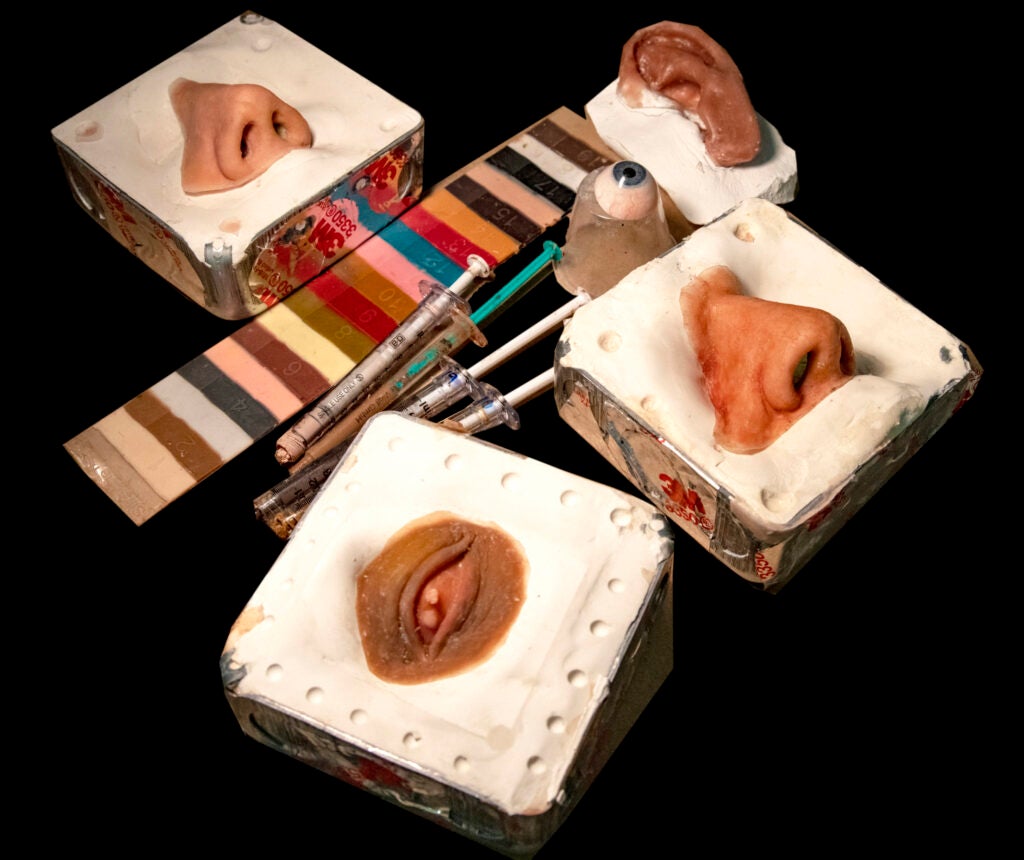
Being Georgia’s only formally trained and educated anaplastologist, as a result of only a few national students being selected every year to study anaplastology, another barrier Behr hopes to see abolished in the future is the unclear pathways students have to pursue anaplastology. With cancer being so prevalent and many patients needing her services, she anticipates a strong need for more programs to become available for those who wish to pursue the field of prostheses.
With Augusta University’s new focus on developing programs that highlight the necessity for art and technological partnerships, Behr hopes that one day anaplastologists will be able not only to study at AU but also work on breaking current prosthetic boundaries.
“There’s so much value in combining art, science and technology, and as a medical illustration professor here at AU, I see it a lot … you create a brain of endless possibilities that can think creatively,” she said. “Right now one of the challenges is, when you replace an eyeball and someone’s lid, it doesn’t blink or move. It’s been one the Holy Grails of research and electronics, but as of right now the electronics just aren’t there yet.”
Unless one has experienced living or knows someone first hand with a prosthetic, Behr said there is a wide misconception that prosthetics are not medically necessary.
“These are all absolutely medically necessary. The way that my treatment works is that I work on referrals from doctors, and I provide a service based on doctor prescriptions,” she said. “While they are aesthetic, they are required. A nose closes up the nasal cavity and protects the mucus in there; it makes sure that nothing enters that area that shouldn’t be. With the ear, they’re able to wear their glasses or protective eye glasses or masks and go back to work. Around COVID times when masks were a big thing, an ear had the ability to allow someone to wear those when they needed to.”








